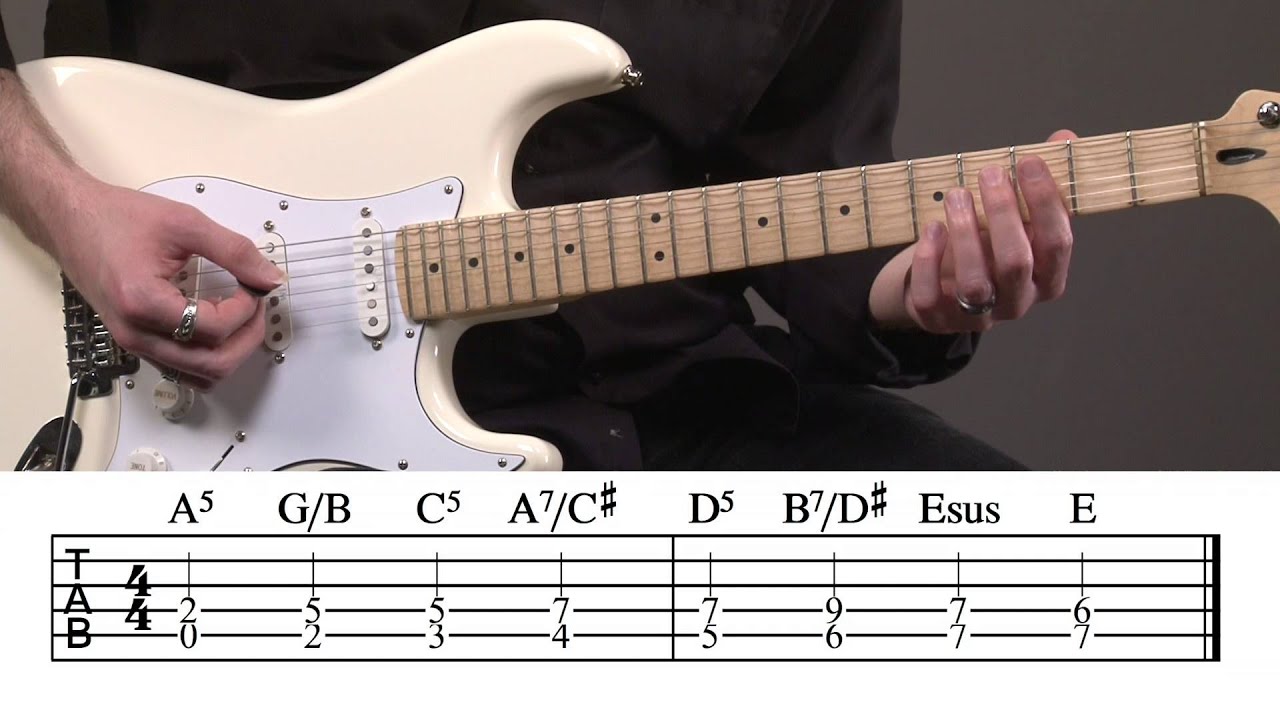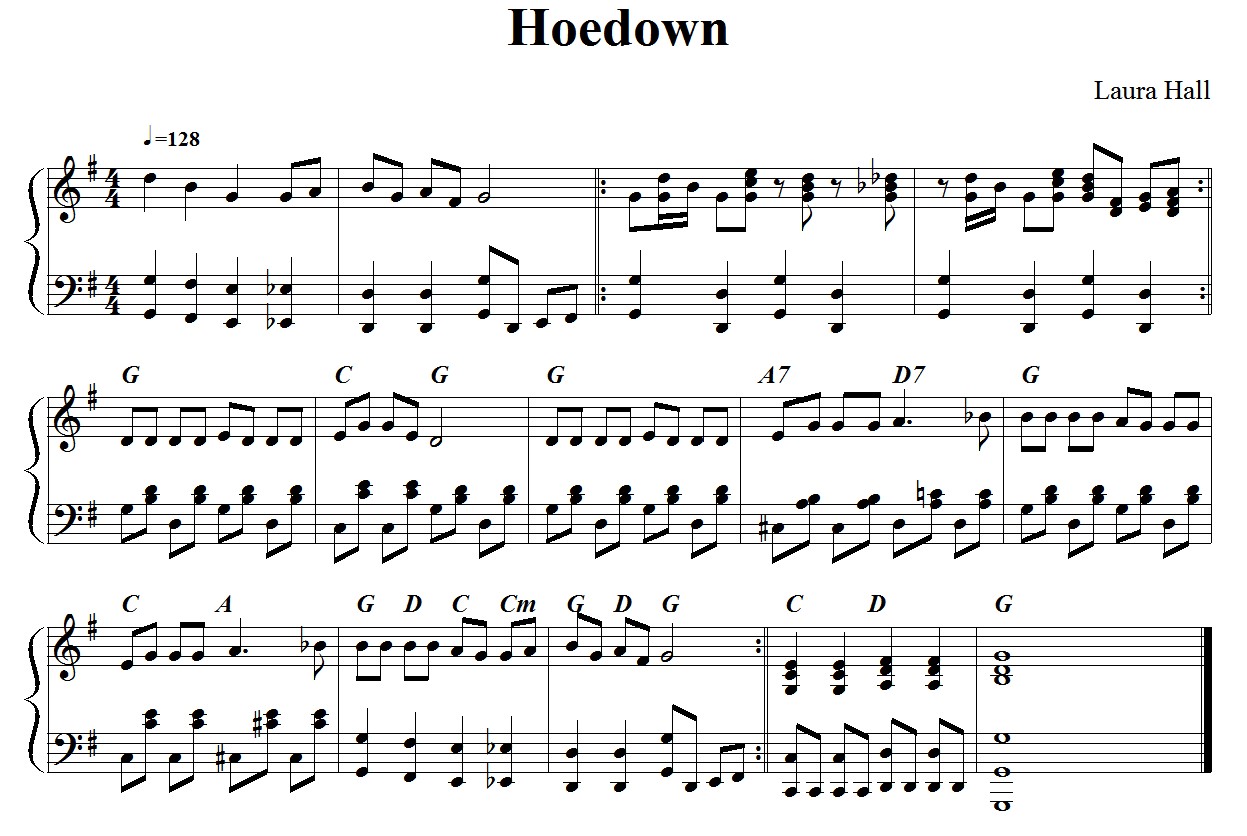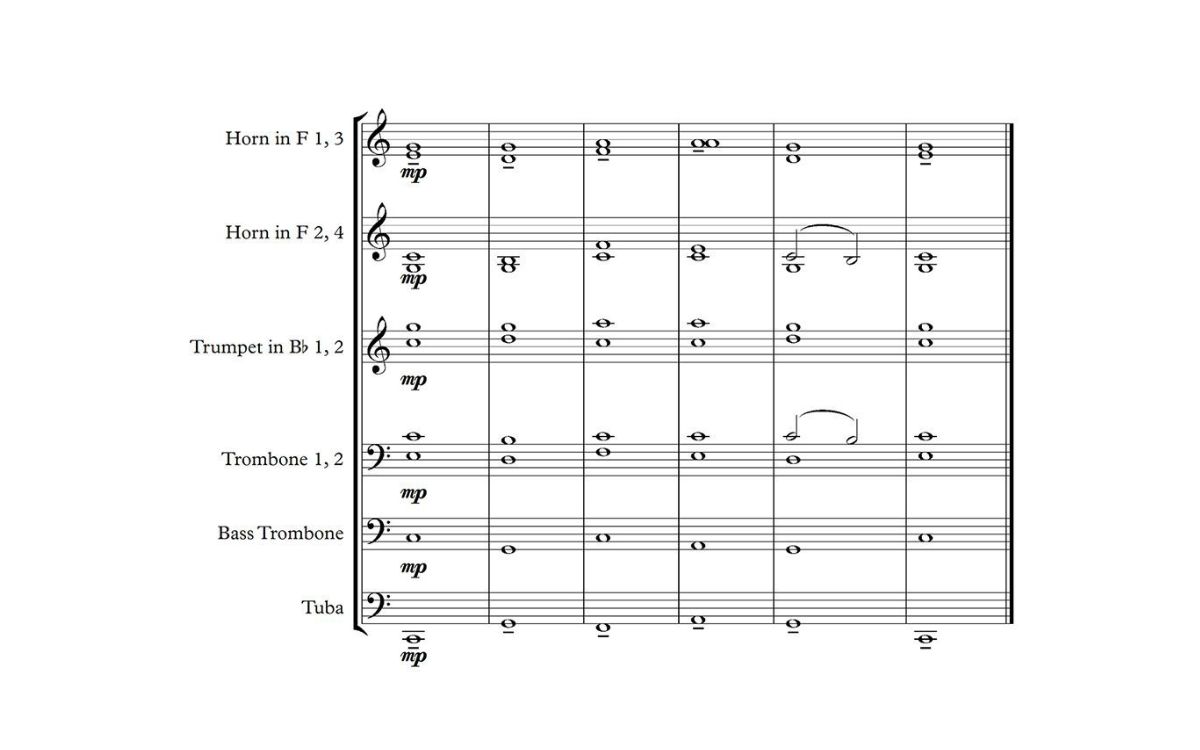Home>Instruments>Bass>How To Write A Bass Line


Bass
How To Write A Bass Line
Modified: January 22, 2024
Learn how to write a catchy and memorable bass line with our step-by-step guide. Improve your music compositions by mastering the art of playing the bass.
(Many of the links in this article redirect to a specific reviewed product. Your purchase of these products through affiliate links helps to generate commission for AudioLover.com, at no extra cost. Learn more)
Table of Contents
- Introduction
- Basics of Writing a Bass Line
- Understanding the Key and Chord Progression
- Establishing the Root Note
- Exploring Different Rhythmic Patterns
- Utilizing Scale and Interval Patterns
- Incorporating Passing Tones and Chromaticism
- Creating Melodic Interest
- Syncopation and Offbeat Accents
- Using Articulation Techniques
- Harmonic Variations and Embellishments
- Walking Bass Lines
- Enhancing the Groove with Ghost Notes
- Adding Fills and Variations
- Conclusion
Introduction
Welcome to the world of bass lines! Whether you’re a beginner or an experienced musician, understanding how to write an engaging and catchy bass line is essential in creating a solid foundation for any musical composition. The bass guitar is not just a supportive instrument; it plays a crucial role in driving the rhythm and establishing the harmonic structure of a song.
In this article, we will dive into the fundamentals of writing a bass line that not only supports the melody and chords but also adds depth and groove to the overall sound. We’ll explore various techniques, concepts, and musical elements that will help you create bass lines that stand out and keep listeners engaged.
Before we jump into the specifics, it’s important to note that the role of the bass is to provide a solid foundation for the rhythm section. It acts as a bridge between the harmony and the rhythm, connecting the chords and driving the groove of the song. By understanding this crucial role, you’ll be able to approach bass line writing with more intention and purpose.
Whether you’re playing in a band, composing your own music, or just jamming with friends, having a well-crafted and memorable bass line can elevate the overall musical experience. So, let’s get started and explore the basics of writing a captivating bass line!
Basics of Writing a Bass Line
When it comes to writing a bass line, it’s essential to have a solid understanding of the foundational elements that make up a song. The key aspects to consider include the key and chord progression of the song, establishing the root note, exploring different rhythmic patterns, and utilizing scale and interval patterns.
Understanding the key and chord progression is crucial as it helps determine which notes and scales will work harmonically within the song. The key dictates the primary scale and notes that will be used throughout the composition, while the chord progression outlines the specific chords that are played in sequence. By knowing the key and chord progression, you can create a bass line that complements and enhances the overall chord structure.
Establishing the root note is a fundamental element in bass line writing. The root note is the foundation upon which the rest of the bass line is built. It is typically the lowest note in a chord and acts as the anchor for the harmonic structure. By emphasizing the root note, you provide a strong and stable foundation for the song. Experiment with different inversions and positions to find the most effective root note placement for your bass line.
Rhythm is another crucial component of a bass line. Different rhythmic patterns can drastically change the feel and groove of the song. Experiment with various rhythmic patterns, such as straight eighth notes, syncopation, and offbeat accents, to add variety and interest to your bass line. Syncopation, in particular, can create a sense of tension and groove by accenting offbeats and adding unexpected rhythmic elements.
Utilizing scale and interval patterns can help create melodic interest in your bass line. By incorporating scales and intervals, you can add movement and melodic contour to your bass line. Experiment with different scale patterns, such as the pentatonic or blues scale, to add a bluesy or soulful vibe. Intervals such as thirds, fifths, and octaves can create harmonic tension and highlight important chord tones.
While these are just the basics of writing a bass line, they provide a solid foundation for creating compelling and engaging bass lines. By understanding the key and chord progression, establishing the root note, exploring different rhythmic patterns, and utilizing scale and interval patterns, you can start crafting bass lines that not only support the song but also add depth and musicality to the overall composition. Now that we’ve covered the basics, let’s dive deeper into more advanced techniques and concepts to enhance your bass line writing skills.
Understanding the Key and Chord Progression
When it comes to writing a bass line, having a clear understanding of the key and chord progression is crucial. The key determines the set of notes and scales that will harmonically work together, while the chord progression outlines the sequence of chords used in the song. By grasping these concepts, you can create a bass line that complements and enhances the overall harmony of the composition.
In music theory, the key refers to the tonal center of a piece. It determines the primary scale and notes that will be used throughout the song. The key is typically identified by the note or chord that feels the most resolved and stable. For example, if a song is in the key of C major, the C note and C major scale will serve as the foundation for the bass line.
The chord progression is a sequence of chords played in succession. It provides the harmonic structure of the song and guides the bass line. Each chord within a progression has a specific function and establishes a different tonal center. For example, a common chord progression in the key of C major may include the chords C, F, and G. The bass line should accentuate the root notes of these chords to reinforce their harmonic function.
When writing a bass line, start by identifying the key of the song. This can be done by listening for the tonal center or by analyzing the chords being played. Once the key is determined, you can then focus on the chord progression. Pay attention to the chord changes and emphasize the root notes of each chord in your bass line.
It’s important to note that while emphasizing the root notes is a solid foundation for a bass line, it’s not the only option. You can also explore playing other chord tones or even create melodic lines within the given key. This adds variation and musicality to your bass line. Experiment with different note choices and rhythmic patterns to find what works best for the song.
Understanding the key and chord progression is essential in creating a bass line that fits harmonically with the rest of the composition. By identifying the key, recognizing the chord progression, and accentuating the root notes or other chord tones, you can craft a bass line that enhances the overall harmonic structure and adds depth and musical interest to the song.
Establishing the Root Note
Establishing the root note is a crucial step in writing a bass line. The root note serves as the foundation for the harmonic structure of a song and is typically the lowest note in a chord. By emphasizing the root note, you provide stability and a sense of grounding to the composition.
When it comes to establishing the root note, the first step is to identify the key and chord progression of the song. The key determines the primary scale and notes that will be used, while the chord progression outlines the specific chords played in sequence. By understanding the key and chord progression, you can locate the root notes of each chord and incorporate them into your bass line.
One common technique for establishing the root note is to play it on the downbeat or the strong beats of the song. This helps solidify the chord changes and provides a clear sense of harmony. By emphasizing the root note on these strong beats, you create a strong foundation for the rest of the band or arrangement to build upon.
Another technique for establishing the root note is to play it in a lower register or octave. The lower frequencies of the bass guitar have a stronger impact, helping to emphasize the root note and give it more prominence in the mix. This also provides a solid anchor for the rest of the musical elements to connect with.
While emphasizing the root note is important, it doesn’t mean that you should solely focus on it. You can also explore other chord tones and create melodic lines within the given key. This adds variation and musicality to your bass line. However, it’s crucial to maintain a strong connection to the root note as it establishes the harmonic foundation.
Experiment with different ways of playing the root note, such as using different fingerings, inversions, or even playing in different positions on the fretboard. This will help you find the most effective and interesting ways to establish the root note in your bass lines.
Establishing the root note is an essential aspect of writing a bass line. By understanding the key and chord progression, emphasizing the root note on strong beats or downbeats, playing in a lower register, and experimenting with different variations, you can create a bass line that provides a solid foundation and enhances the harmonic structure of the song.
Exploring Different Rhythmic Patterns
Rhythm is a fundamental element in creating a captivating bass line. Different rhythmic patterns can greatly impact the feel, groove, and overall energy of a song. By exploring and incorporating various rhythmic patterns into your bass line, you can enhance the rhythmic drive and add excitement to the composition.
One common rhythmic pattern used in bass line writing is the straight eighth-note pattern. In this pattern, you play one note per beat, evenly spacing out the notes throughout the measure. This provides a steady and consistent pulse to the music, and is often used in genres like rock, pop, and funk.
Syncopation is another rhythmic pattern that can add interest and complexity to your bass line. Syncopation involves accenting offbeats and adding unexpected rhythmic elements. By introducing syncopation, you create a sense of tension and groove, giving your bass line a unique and captivating rhythm. Experiment with accenting the “ands” or offbeats to create syncopated rhythms.
Offbeat accents, such as emphasizing the “and” or the “upbeats,” can add a bouncy feel to your bass line. By accenting these offbeats, you create a sense of forward momentum and energy. This is often used in genres like reggae or ska, where the bass line plays a prominent role in driving the rhythm.
Exploring different rhythmic patterns also involves playing with subdivisions. Subdivisions refer to dividing each beat into smaller note values. For example, you can play triplet subdivisions or sixteenth-note subdivisions to add complexity and variation to your bass line. By experimenting with different subdivisions, you can create interesting and unique rhythmic patterns that elevate your bass playing.
It’s important to note that the choice of rhythmic patterns should align with the genre and style of the song. Different styles of music have their own characteristic rhythmic patterns and grooves. By listening to and analyzing music within your desired genre, you can gain inspiration and ideas for rhythmic patterns that work well within that particular style.
When exploring different rhythmic patterns, don’t be afraid to incorporate rests or pauses. Silence can be just as powerful as the notes you play. Utilizing rests effectively can create tension and anticipation, adding drama and dynamics to your bass line.
By exploring and experimenting with different rhythmic patterns, syncopation, offbeat accents, subdivisions, and rests, you can create bass lines that are rhythmically interesting, engaging, and make a lasting impact on the listener. So, don’t be afraid to step out of your comfort zone and get creative with your rhythm!
Utilizing Scale and Interval Patterns
When writing a bass line, utilizing scale and interval patterns can add melodic interest and create a dynamic and captivating sound. By incorporating these patterns, you can bring movement and depth to your bass lines, enhancing the overall musicality of the composition.
One way to utilize scale patterns is by basing your bass line on a specific scale that corresponds to the key of the song. For example, if the song is in the key of C major, you can use the C major scale as a foundation for your bass line. This provides a harmonically coherent sound and ensures that your bass line fits well with the chords and melody.
Within the chosen scale, you can experiment with different patterns such as ascending and descending runs, sequences, or repeating motifs. These patterns can create melodic movement and help you navigate through the different chords and sections of the song. By using scale patterns, you can add a sense of continuity and cohesion to your bass line.
Interval patterns are another powerful tool for creating interesting and unique bass lines. An interval is the distance between two notes, and using different interval patterns can create tension, highlight important chord tones, and add harmonic interest to your bass line.
For example, incorporating intervals such as thirds, fifths, or octaves can create a strong harmonic foundation and emphasize the chords being played. Playing the third of a chord can add color and emotion, while emphasizing the root and fifth can create a solid and stable feel.
In addition to using intervals within the scale, you can also experiment with chromaticism and passing tones. Chromatic notes are those that are not part of the key or scale, and using these notes can add tension and create interesting melodic movements. Passing tones are notes that connect two important chord tones, and they can create smooth and flowing bass lines.
When utilizing scale and interval patterns, it’s important to maintain a balance between melodic interest and keeping the bass line supportive of the overall composition. The bass’s primary role is to provide a strong foundation for the harmony and rhythm of the song, so avoid excessive melodic embellishments that may distract from that role.
Experiment with different scale and interval patterns, incorporating chromaticism and passing tones strategically to add movement and complexity to your bass lines. Practice exploring different scales and intervals to expand your musical vocabulary and create unique bass lines that stand out.
By utilizing scale and interval patterns effectively, you can elevate the melodic interest of your bass lines and create a memorable and dynamic musical experience for both the listeners and yourself.
Incorporating Passing Tones and Chromaticism
When crafting a bass line, incorporating passing tones and chromaticism can add depth, tension, and a sense of musicality to your playing. These techniques involve using notes outside of the key or scale to create interesting melodic movements and transitions between chord tones.
Passing tones are intermediate notes that connect two important chord tones. They add smoothness and fluidity to your bass line, creating melodic interest and a sense of movement. For example, if you have a bass line moving from a C to an E in a C major chord, you can incorporate a passing tone like a D to smoothly transition between the two chord tones.
Chromaticism involves using notes that are not part of the key or scale being used in the composition. By utilizing chromatic notes, you can introduce tension and create unique melodic movements. These notes can be accented or used as passing tones to add surprising or dissonant elements to your bass line.
When incorporating passing tones and chromaticism, it’s important to use them tastefully and strategically. Avoid overusing them as it can detract from the overall harmony and musicality of the composition. Choose moments where you want to add tension or create unexpected twists in the bass line.
Another technique for incorporating passing tones and chromaticism is by using approach tones. Approach tones are notes that approach a target note by a half-step or a whole step. These tones create tension and anticipation, leading to the resolution on the target note. They can be used to embellish and enhance the melody or harmony of the song.
Experiment with different passing tones, chromatic notes, and approach tones to find unique and interesting ways to incorporate them into your bass line. Practice mixing them with the key and scale tones to create a balance between stability and tension in your playing.
Additionally, it’s essential to listen to the other instruments in the composition and consider the overall musical context. Harmonize with the melody, interact with the chord progression, and support the rhythm section while incorporating passing tones and chromaticism. This synergy will elevate the musical experience and create an engaging bass line that complements and enhances the entire composition.
Incorporating passing tones and chromaticism can take your bass playing to the next level by adding depth, tension, and musical interest. By using these techniques sparingly and thoughtfully, you can create bass lines that surprise and captivate your listeners, while still providing a solid foundation for the song.
Creating Melodic Interest
Creating melodic interest is a key component in crafting a memorable and captivating bass line. While the bass guitar is primarily known for its role in establishing the rhythm and harmony, adding melodic elements to your playing can elevate your bass lines to a whole new level of musicality.
One way to create melodic interest is by incorporating variations in note duration. Instead of playing all the notes with the same length, experiment with different rhythms such as long sustained notes, short staccato notes, or rhythmic subdivisions. Varying the duration of the notes can add dynamics and texture to your bass line, making it more engaging and expressive.
Another technique is to create contour and movement within your bass line. Instead of playing static or repetitive patterns, try adding leaps or jumps between notes. This creates melodic intervals and adds a sense of momentum and musicality to your bass line. By incorporating ascending or descending runs, you can create a sense of progression and melodic flow.
Additionally, exploring different articulation techniques can enhance the melodic interest of your bass line. By using techniques such as slides, hammer-ons, pull-offs, or bends, you can add expressive nuances and inflections to your playing. These techniques allow you to bring out the melodic potential of the bass guitar and create a more dynamic and engaging bass line.
Another powerful way to create melodic interest is by utilizing repetition and variation. Establish a catchy melodic motif or riff and repeat it throughout the song, giving it a signature hook that listeners can latch onto. Then, introduce subtle variations to keep the bass line fresh and evolving. This balance between repetition and variation creates a sense of familiarity while maintaining melodic interest.
Furthermore, consider the relationship between the bass line and the melody of the song. Harmonize with the melody by playing notes that complement or echo the melodic phrases. This creates a cohesive and harmonically rich sound, and adds another layer of melodic interest to your bass line.
Remember that creating melodic interest doesn’t mean overpowering the other elements of the song. The bass’s primary role is still to provide a solid foundation and support the overall musical structure. Ensure that while adding melodic elements, you’re still in sync with the rhythm and maintaining a strong connection with the harmonic progression.
By incorporating variations in note duration, creating contour and movement, utilizing articulation techniques, exploring repetition and variation, and harmonizing with the melody, you can create bass lines that go beyond simple rhythmic and harmonic support. These melodic elements will captivate listeners and make your bass lines memorable and impactful.
Syncopation and Offbeat Accents
Syncopation and offbeat accents are powerful techniques that can bring a unique and exciting rhythmic feel to your bass lines. By accenting offbeats and adding unexpected rhythmic elements, you can create a sense of tension, groove, and intrigue in your playing.
Syncopation refers to the deliberate placement of accents on weak beats or offbeats. Instead of playing on the strong downbeats, syncopated bass lines emphasize the “ands” or the upbeats in the rhythm. This creates a syncopated groove that adds an infectious and energetic feel to your bass line.
One way to incorporate syncopation is by accenting the offbeats with a combination of notes and rests. This creates a rhythmic tension and propels the music forward. Experiment with emphasizing the “ands” or the upbeats of the rhythm, creating unexpected and catchy rhythmic patterns.
Offbeat accents, on the other hand, involve emphasizing notes that fall in between the strong beats of a measure. By placing accents on these offbeats, you can create a bouncy and dynamic feeling in your bass line. This technique is commonly used in genres like reggae, ska, and funk, where the bass plays a prominent role in driving the rhythm.
Adding syncopation and offbeat accents to your bass lines can enhance the overall groove and add complexity to your playing. This rhythmic interplay with the rest of the band or ensemble creates a compelling and captivating listening experience.
It’s important to keep the balance between syncopation and maintaining a solid rhythmic foundation. While syncopation can bring excitement and variation to your bass line, it’s crucial to ensure that the groove and rhythmic integrity of the song are still preserved. Syncopation should enhance the overall rhythm rather than disrupt it.
Listening to music within the genre you’re playing in can provide inspiration and a better understanding of how syncopation and offbeat accents are typically used. Study the bass lines of influential bassists and observe how they incorporate these techniques in their playing. Take note of the subtleties and variations in their rhythm to apply to your own bass lines.
By experimenting with syncopation and offbeat accents, you can add a dynamic and infectious rhythmic feel to your bass lines. These techniques create tensions, add groove, and make your bass playing stand out, solidifying your role as the driving force behind the rhythm section.
Using Articulation Techniques
Articulation techniques play a crucial role in adding expressiveness, dynamics, and personality to your bass lines. By utilizing these techniques, you can enhance the musicality of your playing and make your bass lines more engaging and captivating.
One common articulation technique is slides or glissandos. Slides involve smoothly transitioning from one note to another by sliding your finger up or down the fretboard. Slides can add a sense of fluidity and connection between notes, creating a seamless and expressive bass line. Experiment with different slide lengths and speeds to explore different musical effects.
Hammer-ons and pull-offs are another key articulation technique. Hammer-ons are performed by striking a note with enough force to produce a sound, and then “hammering” down on a higher note without re-picking the string. Pull-offs, on the other hand, involve “pulling” the finger off a higher note to produce a sound on a lower note. These techniques can create smooth legato passages and add melodic interest to your bass line.
Another powerful articulation technique is bending. Bending involves pushing or pulling the string to change the pitch of a note. By adding a slight bend to a note, you can create expressive and bluesy sounds. This technique adds emotion and character to your bass line and can be used to emphasize certain notes or create melodic variations.
Staccato or muted notes are effective for adding rhythmic interest and accents to your bass line. Playing staccato involves cutting off the sound of a note quickly by releasing the finger pressure on the string. This creates a short and sharp sound, suitable for adding percussive elements to your bass line. Muted or muted notes, played by lightly resting your fingers on the strings without fully pressing them down, can add a percussive and funky texture to your bass line.
It’s important to note that while articulation techniques can add flair and excitement to your playing, it’s crucial to use them tastefully and in moderation. The goal is to enhance the musicality of your bass line, not overpower it or distract from the overall composition. Choose moments where articulation techniques can add impact or expressiveness, while still maintaining the cohesion of the song.
Practicing these articulation techniques and incorporating them into your bass playing will not only make your lines more interesting but also provide a greater range of expressiveness and creativity. By mastering and combining these techniques, you can truly make your bass lines come alive and leave a lasting impression on your listeners.
Harmonic Variations and Embellishments
Exploring harmonic variations and embellishments is a fantastic way to add depth, color, and musical interest to your bass lines. By incorporating different harmonic techniques, you can create variations on the basic chord structure and elevate the overall harmonic complexity of your playing.
One technique to consider is the use of chord inversions. Chord inversions involve rearranging the order of the notes within a chord. By playing inversions, you can create a unique and fresh sound in your bass lines. Experiment with different inversions to find the ones that fit well with the melody and other instruments in the composition.
You can also explore the use of extended chords or altered chord voicings. Extended chords involve adding additional notes beyond the basic triads, such as seventh, ninth, or eleventh chords. These extended harmonies can bring a sense of richness and sophistication to your bass lines. Altered chord voicings involve modifying the notes of the basic chords to create tension or dissonance. This adds complexity and a unique flavor to your bass playing.
Furthermore, embellishments are a great way to add melodic interest and ornamentation to your bass lines. Consider adding passing tones, grace notes, or trills to create a more intricate and ornate melodic line. These embellishments can provide additional melodic movement and expressiveness that catch the listener’s attention.
Experimenting with harmonic variations and embellishments requires a good understanding of the underlying chord progression. By analyzing the chords and understanding their function within the key, you can effectively incorporate harmonic variations that complement the overall harmony of the song.
However, it’s crucial to maintain a balance between harmonic variations and the overall coherence of the song. While exploring different harmonic techniques can add depth and interest to your bass lines, it’s important not to stray too far from the core harmonic structure. Keep in mind that your bass line should still provide a solid foundation for the rest of the musical elements.
By incorporating harmonic variations and embellishments thoughtfully and tastefully, you can create bass lines that stand out and add a layer of sophistication to your playing. These harmonic techniques will help you explore new musical possibilities and leave a lasting impression on both performers and listeners alike.
Walking Bass Lines
Walking bass lines are a classic and versatile approach to bass playing that adds a melodic and rhythmic element to your bass lines. This technique, commonly used in jazz, blues, and other genres, involves playing a steady stream of quarter notes that outline the chord changes and create a sense of forward motion.
Walking bass lines serve as both a harmonic and rhythmic foundation for the rest of the band. They provide a solid and consistent pulse, while also outlining the underlying chord progression. The root notes and chord tones are typically emphasized, highlighting the harmonic structure of the song.
The key to creating a successful walking bass line is to navigate smoothly through the chord changes. As the chords change, you’ll need to choose appropriate scale tones and passing tones that bridge the gap between the chords. This creates a coherent and melodic flow in your bass lines.
One technique commonly used in walking bass lines is the use of chromatic passing tones. Chromatic passing tones involve using notes that are outside of the key or scale but connect smoothly to the next chord tone. These passing tones create interesting and melodic movements that add color and movement to your bass lines.
Another technique in walking bass lines is the use of arpeggios. Arpeggios involve playing the individual notes of a chord in a sequential manner. By incorporating arpeggios into your walking bass lines, you can highlight the specific chord tones and create a strong connection to the harmony of the song.
Walking bass lines also allow for the expression of your personal style and creativity. While maintaining a solid pulse and harmonic foundation, you can incorporate variations, fills, and rhythmic embellishments to make your bass lines more interesting and unique. These elements add your personal touch to the walking bass line, enhancing its musicality.
Practice is key to mastering walking bass lines. Start by familiarizing yourself with the chord progressions and scales used in the song. Focus on playing steady quarter notes while transitioning smoothly from one chord to another. Gradually incorporate passing tones, arpeggios, and embellishments into your playing. This approach will help you develop a strong sense of rhythm and a solid foundation in walking bass line technique.
Walking bass lines are a versatile and essential technique for any bassist. Incorporating this approach into your playing will not only enhance your musicality but also provide a solid foundation for the rest of the band. So grab your bass and start walking with confidence!
Enhancing the Groove with Ghost Notes
Ghost notes are a powerful technique that can enhance the groove and rhythmic feel of your bass lines. These subtle and percussive notes, also known as muted or dead notes, are played with a light touch and add a rhythmic texture to your playing. By incorporating ghost notes, you can create a sense of groove and make your bass lines more dynamic and interesting.
Ghost notes are typically played on the lower strings of the bass guitar, using the plucking hand’s palm or the fretting hand’s fingers to mute the strings. The result is a muted, percussive sound that provides a rhythmic fill between the stronger, accented notes.
One way to incorporate ghost notes is by using them as syncopated accents. By playing them on the offbeats or weak beats of the rhythm, you can add a funky and syncopated feel to your bass lines. These ghost notes add a layer of complexity and rhythm that complements the other instruments in the band or ensemble.
Another technique is using ghost notes as transitional elements between the root notes or chord tones. By smoothly integrating ghost notes in between the stronger notes, you create a seamless and flowing bass line. This technique adds a sense of fluidity and rhythmic interest, making your playing more engaging and captivating.
Ghost notes can also be used to enhance the groove by adding percussive elements to your bass lines. By incorporating ghost notes in syncopated patterns or rhythmic fills, you create a tight and infectious groove that drives the rhythm section. This technique is commonly used in genres like funk, R&B, and slap bass playing.
When incorporating ghost notes, it’s important to maintain a balance between the accented and ghosted notes. The accented notes provide the rhythmic drive and emphasis, while the ghost notes fill in the gaps and add subtle rhythmic details. Practice controlling the touch and pressure applied to the strings to achieve the desired percussive sound.
Listen to and study the bass lines of influential bassists who utilize ghost notes, and pay attention to how they incorporate them into their playing. Analyze the rhythmic patterns and note choices to understand how they add groove and musicality to their bass lines.
Remember that mastering ghost notes requires practice and control. Start by incorporating them sparingly in your bass lines, gradually increasing their presence as you become more comfortable. Experiment with different rhythmic patterns and placements to find what works best for the song and your personal style.
By incorporating ghost notes in your bass lines, you can enhance the groove, add rhythmic texture, and make your playing more captivating. These subtle and percussive notes bring an extra dimension to your bass lines, elevating the overall musical experience and making your bass playing stand out.
Adding Fills and Variations
Fills and variations are essential elements for adding flair, creativity, and excitement to your bass lines. These musical embellishments can elevate your playing and make your bass lines more unique and memorable. By incorporating well-placed fills and variations, you can inject personality and expressiveness into your bass playing.
A fill is a short musical phrase or passage that occurs in between the main sections of a song. It is often used to create a transition or add a climactic moment to a composition. Bass fills can be melodic, rhythmic, or a combination of both. They can be played in a higher register, using techniques like slides, hammer-ons, or bends, to create a standout moment in your bass line.
Variations, on the other hand, involve altering or embellishing the main theme or melody of a bass line. This can include changing the rhythm, adding extra notes, or exploring different voicings or octaves. Variations can bring a fresh perspective to a recurring bass line and keep it interesting throughout the song.
When incorporating fills and variations, it’s important to consider the musical context. Fills should be tastefully placed, enhancing the overall composition without overpowering the other instruments. They should flow naturally with the rhythm and harmony of the song, adding excitement and anticipation.
Experiment with different scales, patterns, or melodic fragments when creating fills and variations. By exploring different musical ideas, you can find unique and unexpected ways to embellish your bass lines. Pay attention to the dynamics and phrasing, ensuring that the fills seamlessly connect with the rest of the musical elements.
Another aspect to consider is the relationship between fills and the song structure. Fills can be used as transitions between different sections, as an interlude, or as a buildup to a climactic moment in the music. By strategically placing fills at key moments, you can create impactful and memorable bass lines.
Listening to the music of other bassists and studying their use of fills and variations can provide inspiration and ideas for your own playing. Analyze how they incorporate fills, what techniques they use, and how they fit within the overall composition. This study will help expand your musical vocabulary and give you a better understanding of the possibilities for your bass lines.
Remember, the goal of adding fills and variations is to enhance the musicality and impact of your bass lines. Use them to bring excitement, musical interest, and a personal touch to your playing. As you gain experience and confidence, you’ll develop your own unique style and approach to incorporating fills and variations into your bass lines.
Adding fills and variations to your bass lines can transform them from basic rhythms and harmonies into exciting and memorable musical moments. These embellishments showcase your musicality and creativity, allowing you to leave a lasting impression on both fellow musicians and listeners.
Conclusion
Congratulations! You’ve explored a range of techniques and concepts for writing captivating and engaging bass lines. From understanding the key and chord progression, establishing the root note, and exploring different rhythmic patterns to utilizing scale and interval patterns, incorporating passing tones and chromaticism, and adding melodic interest, you now have a solid foundation for creating compelling bass lines.
We’ve delved into the importance of incorporating syncopation and offbeat accents to add groove, using articulation techniques for expression and dynamics, and exploring harmonic variations and embellishments to enhance the musicality of your playing.
Additionally, we’ve discussed the versatility and creativity of walking bass lines, the rhythmic texture of ghost notes, and the impact of fills and variations in adding flair and excitement to your bass lines.
Remember, excellence in writing bass lines comes with practice and experimentation. Take the time to explore different styles, genres, and techniques while remaining mindful of the song’s overall structure and musical context.
As you continue on your bass playing journey, don’t be afraid to develop your unique voice and style. Experiment, improvise, and explore new musical ideas to make your bass lines shine.
Whether you’re jamming with friends, performing with a band, or creating your own compositions, writing captivating bass lines is an art form that can truly transform the music. By understanding the fundamental techniques we’ve covered and incorporating your creativity and personal touch, you have the power to bring the rhythm section to life and create an unforgettable musical experience.
So, grab your bass guitar, immerse yourself in the music, and let your unique voice as a bassist shine through. Embrace the challenge, enjoy the process, and keep pushing the boundaries of your playing. With time, dedication, and a passion for music, you will continue to refine and elevate your skills as a bassist. Rock on!











